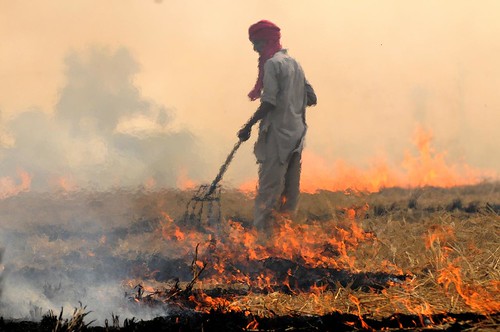- Tobacco is enjoying a resurrection as a crop.
- Michigan State University to research adapting maize to climate change in Zambia and Kenya.
- Researchers & Restaurateurs Work to Save Peru’s Food Diversity; article and podcast. The really good news? Oca are not potatoes!
Brainfood: Beans, Tree erosion, Climate space, Ecosystem services, Conservation, Pest management, Phenomics, Oca, Biodiversity research
- Seed Morphobiometry of Wild and Cultivated Taxa of Phaseolus L. (Fabaceae). Measurements confirm taxonomy; three big groups.
- Meta-Analysis of Susceptibility of Woody Plants to Loss of Genetic Diversity through Habitat Fragmentation. Pollination mechanism makes little difference.
- Running Out of Climate Space. Commentary on two paper in the same issue of Science; now, someone do the same for crops.
- The Future of Payments for Environmental Services. Any ag? Only in a negative way.
- Land, Food, and Biodiversity. Palm oil, pollution, pristine environments, population pressure.
- Avian Conservation Practices Strengthen Ecosystem Services in California Vineyards. Birds eat insects shock.
- Phenomics – technologies to relieve the phenotyping bottleneck. Just what we need for mo’ better characterization and evaluation.
- Diversification of the American bulb-bearing Oxalis (Oxalidaceae): Dispersal to North America and modification of the tristylous breeding system. Oca fans everywhere are agog.
- Global biodiversity research during 1900–2009: a bibliometric analysis. Somebody tell us; any ag?
Don’t forget the open Mendeley group for the papers we link to here.
Punjab burning
Our pal Neil Palmer was in India recently to see how the farmers there deal with the debris after the rice harvest. The result is a stunning set of pictures. My question: is anybody doing anything to suggest that maybe some of that organic matter could be retained in the soil?
Nibbles: Palestinian genebank, PNG seeds, Local chickens, Landscapes
- New seed bank on West Bank. This one seems to be a genebank. I think.
- Seeds and needs in PNG.
- ILRI PowerPoint on Ethiopian chickens. But 46 slides?
- Everybody’s talking about the new Landscapes for People, Food and Nature thing, so I guess we should too.
Nibbles: Fish blog, El Guardabosques, Andean crops, Traditional knowledge
- WorldFish director has a brand new blog with a fancy Latin tag. Expiscor: to fish out, to find out, and discover.
- Cuba boasts home-grown Guardians of the Forests.
- Promotion of Andean Crops for Rural Development in Ecuador. No idea what this is or why it popped up now, but worth sharing anyway.
- Bioversity shares slides on The role of agricultural biodiversity in diets in the developing world: Improving diet diversity, quality and ecosystem sustainability.
- IIED comes out for traditional methods to cope with climate change. Could we abandon this sterile dichotomy, please?
